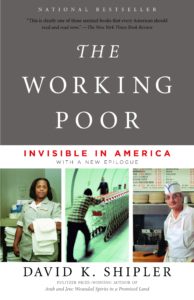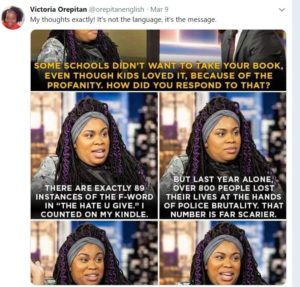As educators, we are continually reaching beyond our own boundaries, and we encourage our students to reach beyond themselves, too, to explore new worlds, consider new ideas, get to know people—fictional and otherwise—whom they will never meet in their lives.
We do this with the utmost respect for who and what we study as well as for each other and for the people and ideas in our worlds.
NCTE maintains that students have the right to materials and educational experiences that promote open inquiry, critical thinking, diversity in thought and expression, and respect for others. . . .
—NCTE Position Statement on Academic Freedom
In addition,
. . . schools are unique spaces; prioritizing the development of critical thinking and communication requires promoting the free flow of a wide range of perspectives within an environment that is safe for a diverse group of students. . . .
—Guidelines for Dealing with Censorship of Instructional Materials

This is why we need our students to encounter books that go beyond the boundaries of their everyday lives. We know that our students need to read books about people other than themselves, unlike the school district administrator who challenged the use of David Shipler’s The Working Poor: Invisible in America in the district curriculum because, “We don’t have any poor people in our town.”

We know that we need to bring our students’ attention to current issues in our society, such as the police brutality depicted in Angie Thomas’s The Hate U Give, and that we need to help our school districts and parents, wherever this book has been challenged, to get past the realistic use of the F-word in the novel and focus on the police brutality issue.
We need our students to read stories with LGBTQIA protagonists and themes, stories whose characters and settings embrace cultures other than Anglo culture, stories set out of this world as in this list or as in this list, or stories that frame the world this way or this way.
We need our students to read and choose to read so much more. We need our students to
. . . read a wide range of print and non-print texts to build an understanding of texts, of themselves, and of the cultures of the United States and the world; to acquire new information; to respond to the needs and demands of society and the workplace; and for personal fulfillment. Among these texts are fiction and nonfiction, classic and contemporary works.”
—NCTE/IRA Standard #1

